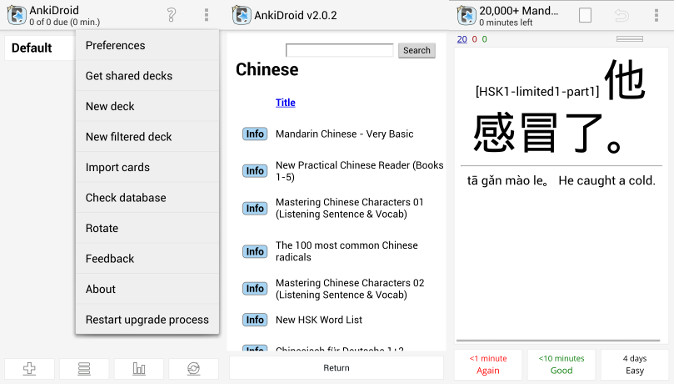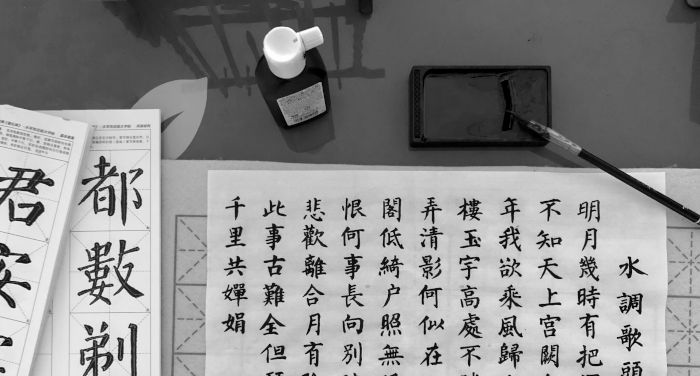
When people know that I can speak Chinese some common questions are:
“Isn’t it really hard to learn Chinese letters?”
To which I respond: “Not as hard as you think.”
The next question is usually:
“Do you know the whole alphabet?”
Which I don’t know what to answer, so I just say “No, not yet.”
This article is dedicated to the people that ask me these things, as well as to those who are interested in Chinese writing and don’t know where to start.
When you finish reading this article, you will have a basic idea of Chinese writing and will have learned some of these incorrectly named Chinese letters effortlessly, in such a way that you are not going to forget them easily.
If you stumbled upon this article accidentally because you want to get a tattoo with Chinese letters, wait for a second, as you might still learn something and avoid getting a tattoo of something that your future Chinese girlfriend/boyfriend is going to laugh at every time they see it.
Why is it incorrect to say “Chinese letters” and what is their proper name?
To make things simple, languages such as English, Spanish, Greek, Russian, or even Korean are based on letters that can be ordered into an alphabet, where each letter is associated with a sound and are combined to form words.
Chinese does not have letters and therefore doesn’t have an alphabet. Rather, it has characters that are associated with a concept and not a sound.
This is similar to the meaning of numbers:
If I write 1, a Spanish speaker will read “uno,” an English speaker “one,” and a French person “un,” and so on.
Chinese does not have an alphabet due to the fact that Chinese does not have letters; rather, Chinese has characters.
If Chinese doesn’t have letters, how do they write?
Chinese writing can be broken down as follows:
- Stroke: There are only 8
- Radical: multiple strokes make a radical (there are 256)
- Character: One or more radicals make a character (3,000 characters cover 99% of texts)
- Word: One, two, or three characters make a word.
It is soooo complicated!
It’s simpler than it seems. Let’s consider a few examples:
We will use two strokes and together they make a radical, which is both a character and a word.

But what does it mean?

Yes, it is a PERSON.
But if this person opens up their arms like this:

He is telling us that it is this BIG!
And if he moves his arms?

He is warning us about something. FIRE! FIRE!
What does this remind you of?

Yes, it is an arch, or better said, a DOOR
And this?

Better this way?

Yep, it’s a MOUTH.
These simple characters are words on their own but can be combined to form new words. For example:
- If you talk about the mouths of people, 人+口= 人口 you will be talking about the POPULATION.
- If you talk about the mouth of the door, 门+口= 门口 you are talking about an ENTRANCE.
You can also use these as radicals to form a new character. For example:
- If you put a person 人 inside the mouth 口 you get 囚, making something rather visual, and meaning PRISON.
Did you like the examples?
You can see more similar examples in the video for this article, which discusses the best way to learn Chinese characters. Also, you will find a larger explanation and plenty of examples in this fantastic post from LTL Mandarin School.
Is it difficult to learn Chinese characters?
I’m not going to lie: it is a difficult task but is not impossible.
If you know how and have the right tools, you can learn without too many difficulties, using your memory and having fun all the while..
You can click here to know how we manage to learn to write Chinese by studying only 10 minutes a day.
Photo Credits: Cover Photo by Markus on Pixabay
Other Photos: Wikimedia Commons




In my refresher; pinyin is too difficult but as you have mentioned and that radicals can be complicating with too many strokes to follow.
Although there are no exact letters; the strokes in my elementary form the letters of korea as in sa abbreviated in pie.
Sorry, I don’t understand the comment as you mix too many concepts, pinyin is a phonetic system, the strokes are the minimum unity of Chinese writing, radicals are the minimum structure with meaning. Korean use phonetical writing so have nothing to do with Chinese
I am planning to have a tour in asia after i have my financing sttled and have given a little work in our old family home which cannot just be demolished; civil code.
Can i travel to Chinese speaking countries even if its about to be winter; and maybe snowy?
What special foods and things should i know in addition to customs and tradition as” in a law each day lead you away from trouble.”
1) From all Chinese speaking countries/regions only in China Mainland snows, also I don’t see any problem in traveling during winter if you are well equipped.
2) I think common sense is normally enough to stay away from trouble.
bumcheese